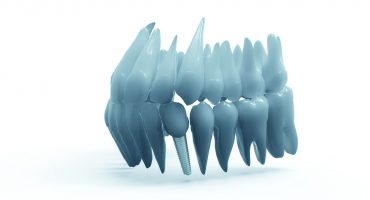Everyone knows that calcium is essential for healthy bones and teeth. But what does calcium have to do with vitamin D? Very much - because the body can absorb the important calcium only with the help of this vitamin. So far, it has been difficult to reliably detect vitamin D deficiency in the body. Thanks to the latest research, the undersupply of the vitamin can now be determined by X-raying the teeth.
Majority of Germans are undersupplied with the sun vitamin
The big problem with vitamin D: 90 percent of it is formed by solar radiation in our body - more precisely by the UV light contained therein. Now we are not spoiled by the sun in our climate. And the increased use of sunscreens with a high protection factor does the rest - because they prevent UV rays from penetrating the skin. In addition, the vital vitamin is only available in small amounts in foods such as fatty fish, liver and eggs. Not surprisingly, therefore, that the majority of Germans suffer from a deficiency.
Key function for our health
But how is a vitamin D deficiency noticeable? The vital vitamin is involved in countless processes in our body. Among other things, it is due to the lack of calcium synthesis to disrupt the mineral balance. The important calcium for building and maintaining bone mass is not stored sufficiently. This can lead to bone diseases such as osteoporosis or osteomalacia. The latter disease is characterized by a reduced strength of the bones. The symptoms are varied - ranging from bone pain to constant fatigue to skeletal deformation. Osteomalacia has particularly fatal consequences in childhood - where osteomalacia is referred to by doctors as rickets. Because here calcium lays the foundation for strong, resistant bones.
Scientists are currently investigating a link with various other diseases - ranging from autoimmune disease, high blood pressure and cardiovascular disease to cancer. Initial results indicate a significantly increased risk. However, vitamin D deficiency also seems to play a significant role in dental health.
Does vitamin D deficiency contribute to the development of tooth decay?
A study by Prof. Dr. Phillipe Hujoel, a researcher at the University of Washington, shows a clear link between vitamin D deficiency and tooth decay. His work shows that these are by no means new findings. The study consists of an analysis and synopsis of 24 individual studies carried out in a period from the twenties to the eighties in different countries. Apparently, not enough attention has been paid to these results so far.
How can vitamin D deficiency in the tooth structure be read?
Canadian researchers also found that a jagged shape of the pulp - the inside of the tooth - allows clear conclusions about vitamin D deficiency. On the other hand, if the tooth interior shows soft, curved curves during x-ray, the body is sufficiently supplied with the vitamin.
Substitution with the vital vitamin may be useful in certain cases. This is especially true for children and infants as well as pregnant women and people who are less sun-exposed. Even seniors are increasingly affected by vitamin D deficiency. Fortunately, an X-ray of the teeth makes it very easy to disclose deficiencies of the sun's vitamins.
Weitere Beiträge

Robots instead of dentists - already common in China?
Almost everyone knows the uncomfortable feeling when dental treatment is imminent. Dental treatment anxiety or phobia plagues about one third of the German population. And how would you feel if a robot takes over the next procedure instead of a dentist?


